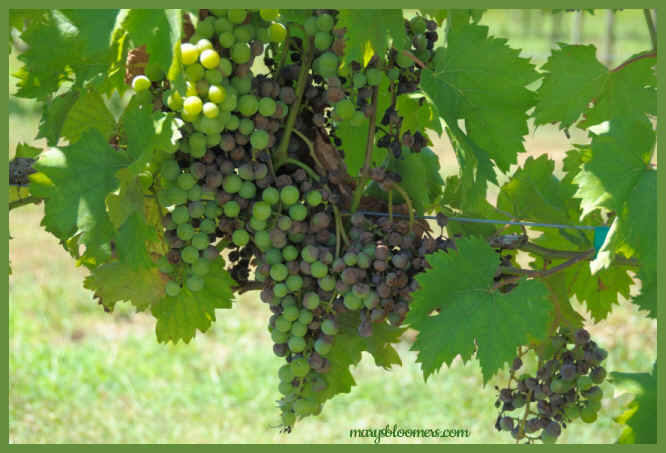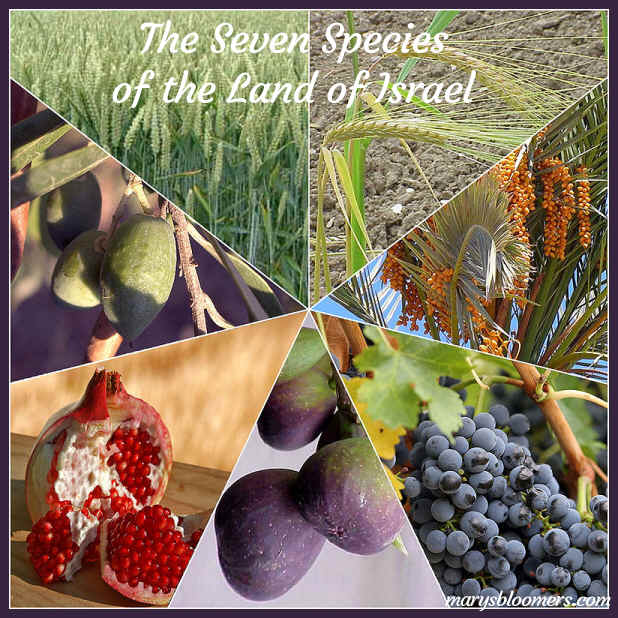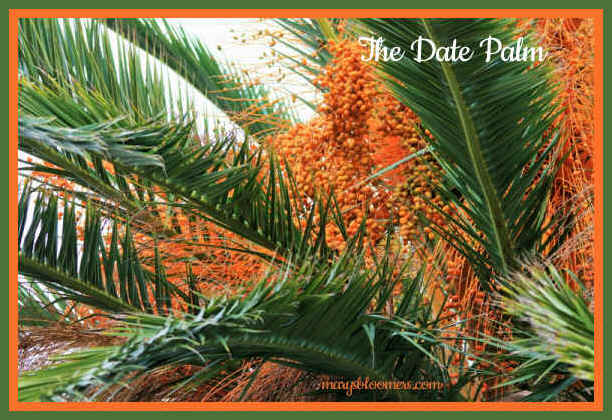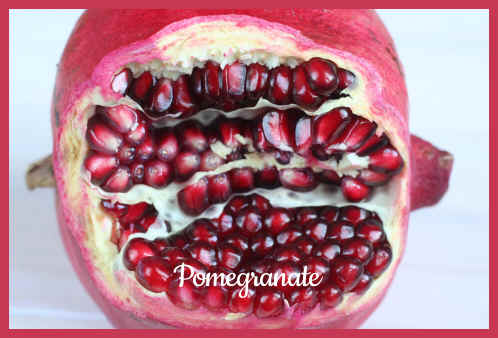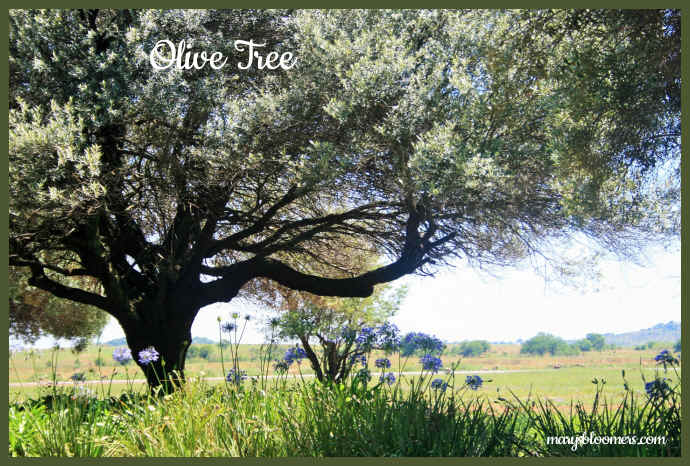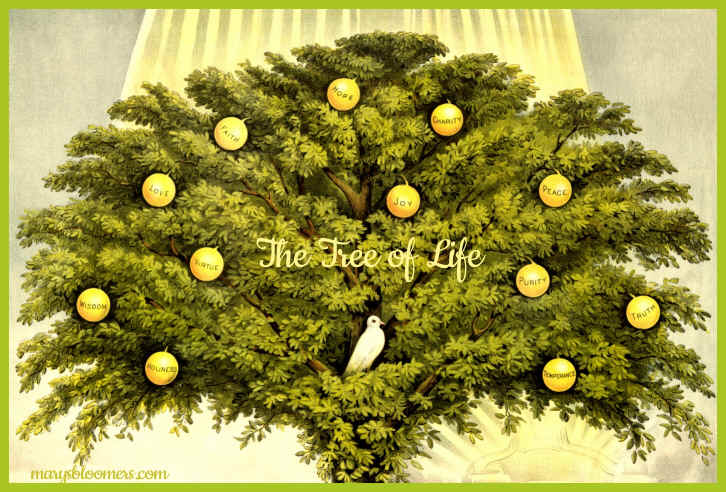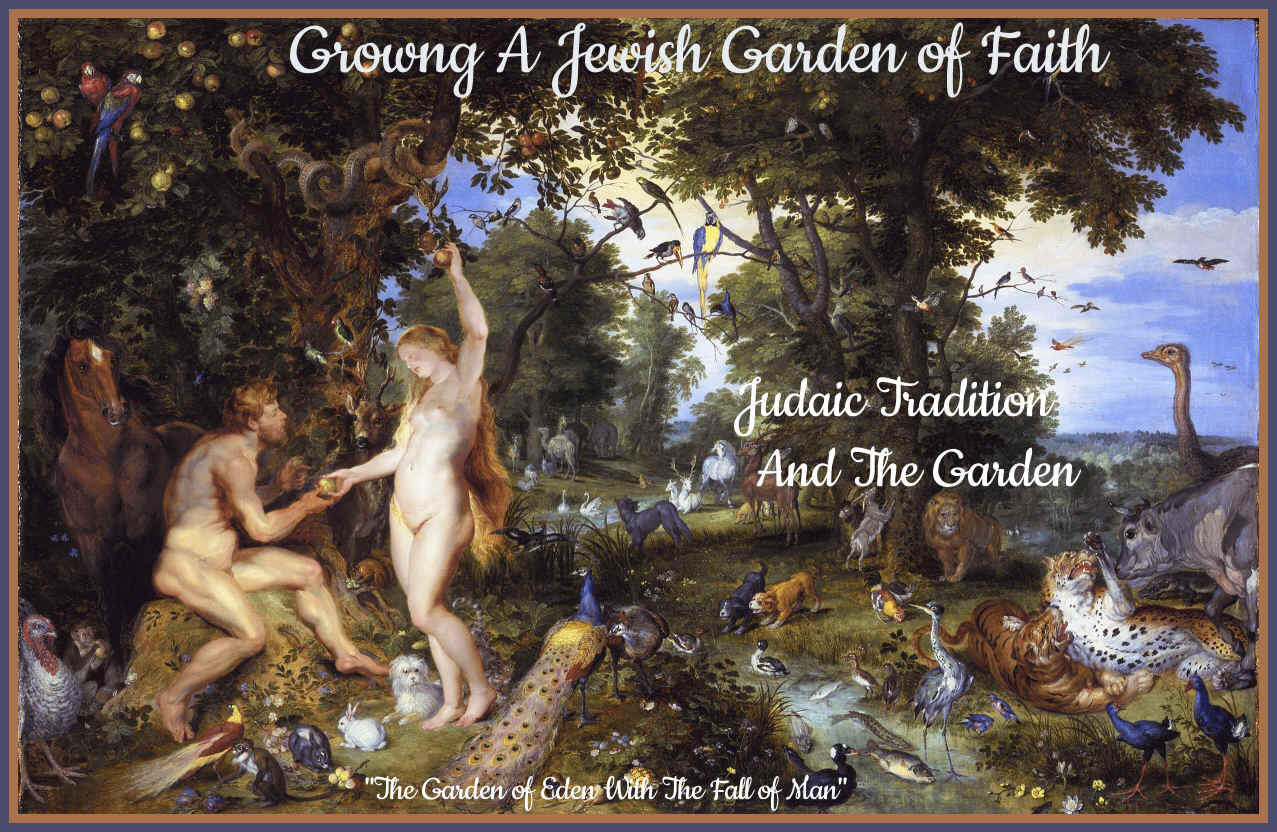 |
|
Genesis
2:4 The Garden of Eden or Garden of God, also called the Terrestrial Paradise, is the biblical garden Paradise described in the Book of Genesis. The story of the Garden of Eden, the most globally celebrated garden of all, God's gift to man, makes theological use of mythological themes to explain human progression from a state of innocence and bliss to the present human condition of knowledge of sin, misery, and death. For a look at beautiful Old
Testament Biblical garden design, visit this
page - it lists and explains the symbolism and uses of Old
Testament plants known to grow in Israel in biblical times. "Acknowledging the plant
kingdom as a path to love of God" "Mankind's first mission was to tend a garden: Adam was placed in the Garden of Eden to look after and cultivate the beautiful garden that God prepared. God first appeared to Moses in a thorn bush, because God wanted to emphasize that even vegetative life is infused with the Divine Presence. The Sages tell us that one should not simply enjoy the beauty of nature for its own sake, but use it as an opportunity to praise God for creating such beauty in this world. Some of God's most amazing miracles are happening right now in your own backyard." The Old Testament of The Bible has many references to gardens besides The Garden of Eden, and the Song of Solomon is perhaps the most influential poem in garden literature. Excerpts from Gothein's History of Garden Art "The Jews took as the beginning of all things the creation of the Garden of Eden; and this garden of Genesis is exactly like the oriental tree-park. For Jehovah makes all kinds of trees to grow forth from the earth, the fruit good to eat and fair to look upon, and in the middle of the garden the tree of the knowledge of good and evil, and the tree of life. Later accounts have added the water that would be needed, the stream which had its source in Eden, and from which four other rivers flowed. In this garden the beasts lived together. This garden gave much refreshment both with its fruits and with its cooling shade; and God Himself walked in the garden in the cool of the evening. The Jews, who from patriarchal times had found a home in these parks, set up many sanctuaries and altars as well as graves. Abraham certainly planted a park, in which he sacrificed to God, but later on, there was much opposition to the practice, especially by the zealous prophets, for it was feared that the Jews might be led further into superstition by the heathenish custom of sacrifices in the open air. Strabo talks about a palm grove in the plain of Jericho, saying it was well-watered and contained many buildings, and also of a royal palace as well as a famous garden of balsams, from which precious spices were extracted. Josephus describes Solomon’s palace elaborately enough, but says little about his gardens, except that they were fair to look upon. One of the chambers was decorated as a garden-room. The ornament was all regularly set out, the first three rooms in priceless stonework. In the’ fourth was a wondrous show: here one beheld trees and many kinds of plants, their branches and leaves hanging down and throwing their shade below. The trees and plants covered the stone, which was below, and their leaves were delineated with such marvellous delicacy that they almost seemed to be moving. What they wanted was to enjoy the beauty of a garden in a private room. At Jerusalem itself there were great
gardens round the walls outside, both for trees and for vegetables, but
they could not be put inside the holy city, for no manure, nothing
unclean, might be brought within her sacred walls, and only rose-gardens
were permitted. The gardens outside the town were enclosed by walls with
small turrets, in which guards were placed. " Researchers have discovered that an elaborate ancient garden near Jerusalem was home to a wide variety of exotic imported plants. Ramat Rachel is an ongoing archeological dig on the southern outskirts of Jerusalem. A 2,500-year-old garden at the site was probably built by local Judeans. Among the imported species of trees and plants determined by pollen analysis to have grown in the garden is the citron tree. According to the researchers, this pollen is evidence for the first cultivation of the citron tree, which is not native to Israel. What makes it interesting for traditional Jews is that the citron, or etrog in Hebrew, is a powerful and mystical symbol used during the Jewish holiday of Succoth. An unusually fragrant citrus fruit, the etrog accompanies a bundle of three other plant species – willow, palm frond and myrtle — used in the weeklong festive fall holiday.
The researchers know that indigenous trees such as figs and grapevines were planted there. New evidence also points to myrtle and the Persian walnut tree, birch trees and the cedar of Lebanon. The grand and opulent garden was for the ruling class at the time to flaunt their wealth. In medieval times, certain vegetables were found in Jewish gardens that give clues about what to grow in your Judaic garden. Researchers know that indigenous trees such as figs and grapevines were planted there. Myrtle and citron, the Persian walnut tree, birch trees and the cedar of Lebanon. Recipe clues were almonds. Apples, chard, mint, parsley, garlic, chickpeas, leeks, onion, spices, currants and dates. Also, artichokes, pine nuts and (in more modern times) squash. The history of Jewish cuisine begins with the cuisine of the ancient Israelites. Over the centuries, as Jewish diaspora communities developed, they created variations of dishes based on the local climate and available ingredients. Clues are found in historical documents listing the foods eaten during Passover and other holy days. Plants that are not cold hardy in your area can be grown in pots and brought indoors for winter. Many Jewish cultures planted potatoes, carrots, and parsnips which are used in such dishes as latkes, matzo ball soup, and tzimmes. Cooked, stuffed and baked vegetables such as stuffed cabbage are central to the cuisine. Agriculture and culinary traditions of the many countries where Jewish communities have settled and varies widely throughout the whole world. Vegetables played a small, but significant role in the diet. Legumes and vegetables were typically eaten in stews. Stews made of lentils or beans were common and they were cooked with onion, garlic, and leeks for flavor. Fresh legumes were also roasted, or dried and stored for extended periods. They were then cooked in a soup or a stew. Vegetables were also eaten uncooked with bread. The Israelites drank goat and sheep's milk when it was available in the spring and summer and ate butter and cheese. They also ate honey, both from bees and date honey. Figs and grapes were the fruits most commonly eaten, while dates, pomegranates, almonds, and other fruits and nuts were eaten more occasionally. Wine was the most popular beverage. Tzimmes is a side dish and consists generally of cooked vegetables or fruits, sometimes with meat added. The most popular vegetable is the carrot, which is sliced. Turnips were also used for tzimmes, particularly in Lithuania. In southern Russia, Galicia and Romania tzimmes was made of pears, apples, figs, prunes or plums. The four species are four plants mentioned in the Torah (Leviticus 23:40) as being relevant to the Jewish holiday of Sukkot. Observant Jews tie together three types of branches and one type of fruit, and wave them in a special ceremony each day of the Sukkot holiday, excluding Shabbat. The waving of the four plants is a mitzvah prescribed by the Torah, and contains symbolic allusions to a Jew's service of God. Leviticus 23:40" And you shall take on the first day the fruit of splendid trees, branches of palm trees and boughs of leafy trees and willows of the brook, and you shall rejoice before the LORD your God for seven days." The four plants are identified as the fruit of a citron tree, a ripe, green, closed frond from a date palm tree, boughs with leaves from the myrtle tree and branches with leaves from the willow tree. A present-day Jewish garden is a collection of plants that hold meaning to people of the Jewish faith. It is a place for peaceful contemplation and meditation. The design should include seating and shady pathways. When planning your garden, choose your plants so that they will have meaning rooted in the faith of the Jewish people. Begin with as many of the Seven Species as you can. You can also design a garden that revolves around the Jewish calendar or holidays.
I envision a garden design that displays The Seven Species, surrounded by clusters of traditional vegetables and herbs. A Fig, Olive and Pomegranate tree (all available as dwarf trees for urban gardens and can also be grown in ornamental pots) in the center as the focus of the landscape. The selection of traditional Jewish garden plants centers around the Seven Species listed in Deuteronomy 8:8, which include: wheat, barley, figs, grapevines, pomegranates, olives and date palm honey. In certain regions, particular plants cannot be found or grown for your garden. Exceptions can be made to stand in for them in a decorative or ornamental garden. Figs, olives, pomegranates and dates are common ingredients in the cuisine of Israel. These Seven Species have sustained the Jewish people throughout history. Their first fruits were the only acceptable offerings in the Temple. First Fruits is a religious offering of the first agricultural produce of the harvest.
More plants that you may find meaningful in your Jewish garden: Herbs - Mustard, coriander, dill. Flowers - Lily, anemone, crocus. Tree: Willow, birch, fig, plum, olive, pomegranate and apricots. Prunes and raisins are featured in many Jewish recipes. Vegetables Suggested For Cold regional planting zones Fall/Winter: Consider hardy crops like kale and cabbage, which are known to survive in very cold seasons. Broccoli is another strong veggie fit to tough out winter frosts. Spring: Mid-April marks the beginning of prime planting season. Get stared with lettuce, cauliflower, brussels sprouts, carrots and cabbage that can handle the Winter remnants and last through the change in seasons. Summer: Warm-weather brings a new batch of crops in your garden. Starting in May, beans, cabbage, cucumbers, peppers, potatoes and squash are not only summer favorites, but also do well in our cold climates.
Gardening and Farming laws in the Torah The Trees Cutting Down a Fruit TreeThe Torah forbids cutting down a fruit-bearing tree. This prohibition is only against cutting down the whole tree. If a tree no longer bears fruit (or can only produce a very small amount of fruit), it is permitted to cut down the tree. However, one may not cut down a young sapling that is not yet mature enough to produce fruit. It is permitted to chop down a fruit tree if one needs to build in that location. But it is forbidden to do so merely to extend the garden area or to increase the sunlight. Interestingly, it is permitted to cut down a tree for the purpose of planting a better tree there. One may cut down a fruit tree, if it is:
Even when it is permitted to cut
down a fruit tree, it is considered unfavorable to do so. Therefore it
should be avoided, unless necessary.
GraftingThe Torah forbids the grafting of
any trees or bushes with others species. This is considered meddling
with the natural order of God's universe. Grapevines have a unique status in Jewish law and have stricter rules than these. A rabbi should be consulted concerning grapevine culture. Farming and Gardening Practices in IsraelPerhaps the most fascinating aspect of gardening in Israel pertains to the laws of the Sabbatical year, Shmita. The Torah says that during the final year of a regular seven-year agricultural cycle, the Land of Israel must remain fallow and ownerless. During the Shmita year, it is forbidden to plow, plant, harvest, prune, etc. Whatever grows on its own may be eaten by anyone, and the field's owner may not stop others from partaking. The observance of Shmita imbues trust in God, with an appreciation that the land produces fruit only because God wills it. A Jewish farming practice dating back to Biblical times, it lets the soil rest for one year after every six years of farming (the next shmita year is September 2021–22). Intended to express gratitude for abundance and share one’s fruits of labor with the less fortunate (in accordance with laws that require farmers to forgive debts and leave field corners for the needy to glean), the practice derives from rules laid out in Exodus (23:10): “And six years thou shalt sow thy land, and gather in the increase thereof; but the seventh year thou shalt let it rest and lie fallow, that the poor of thy people may eat; and what they leave, the beast of the field shall eat.” Traditionally, farmers prepared for several years prior to store food and plant enough perennials to eat during shmita. During that year, they only harvested as much as they needed to eat at any time, and otherwise rested from agricultural labor. All fences are taken down, animals are given access to what previously was protected, and no one is allowed to sow any seed. No one is allowed to plow or till or do anything. The land has to stay completely fallow. This cycle allows the soil to rest, regenerate and avoid exhausting its nutrients. While shmita is not widely practiced on commercial farms, even in Israel, its ideals have gained traction in the United States . The practice of letting the land lie fallow after every six years of farming requires a complete reset in sustainable practices—and could be a way to combat climate change. Over the past decade, as the field of spiritual ecology—an understanding of environmental degradation as rooted in spiritual malaises such as greed and apathy—has taken off. There is a reawakened interest in what they call “earth-based Judaism,” which approaches climate change and environmental sustainability through a lens of ancient wisdom. Even though the laws of shmita don’t officially apply in America, many farms—ranging from for-profit farms to urban synagogues’ educational gardens and rural retreat centers—harness its wisdom in creative ways. At the Isabella Freedman Center in Connecticut, they designate a plot of their land during shmita year as one without fences, meaning that anyone is welcome to come and harvest. Man is Like a TreeThe Torah compares a human being to a tree. To paraphrase:
Blessings recited in the garden: Upon the first sighting of the new blossoms of fruit trees in the month of Nissan (springtime), the following blessing is recited
There are also several
blessings to be said upon enjoying the aroma of trees and flowers in your
home garden. These blessings are only recited if the fragrance was
approached with the purpose of smelling it. One who derives pleasure from the fragrance of a woody tree or shrub (or their products) recites the following:
This blessing is only
recited on trees that: 1) grow with bark, and 2) the bark-covered
stem/trunk normally grows to a height of more than 24 cm. If a fragrance is coming from a grass or herbaceous plant (e.g. mint, hyacinth), the following blessing is recited:
Most fruits and vegetables do not emit such strong aromas. But if you encounter a particularly strong and enjoyable fruit or vegetable fragrance, and if it is 1) primarily consumed as a food and not as a spice (e.g. strawberries, but not cinnamon), and 2) you pick it up for the purpose of smelling it, then the following blessing is recited:
If you are enjoying a delicious natural aroma, but you can't determine which blessing to recite, there is an all-inclusive blessing which may be recited over any good aroma:
To learn about a garden
theme for an Old Testament Biblical garden, visit
this page
sources:
Quick Links
Content, graphics and design ©2021 marysbloomers.com
|
